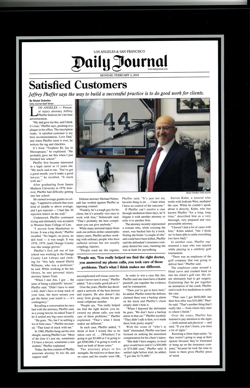When Air Bags Contribute To Injuries
Well-designed, effective air bags save lives, minimizing second-impact injuries in car crashes. Air bag systems that are defective in design or installation, or that no longer work right, can have the opposite effect, causing serious friction burns, abrasions, concussions and broken bones. Deployed air bags often release sodium hydroxide and various metallic oxides, which can cause painful chemical burns.
When air bags are flawed, obsolete, damaged or defective in any other way, they can do more harm than good.
I handle cases involving all types of air bag failures, including:
- False positives: Air bags that deploy at the wrong time do serious harm to passengers.
- Failure to deploy: Air bags sometimes are not there when you really need them. This is often the result of malfunctioning sensors.
- Too forceful: Oversized air bags that expand explosively at 200 mph have greater impact than many people, especially kids, can tolerate.
- Not forceful enough: Air bags must be properly inflated or they have no effect.
- Not properly tethered: Air bags should be secured in place so they don’t shoot out in unpredictable fashion.
- Not properly directed: Air bags must protect the space where the passenger is.
Air Bag Injury Lawyer For Southern California
Air bag claims are made against either the carmaker or the service center that installed the devices. Pheffer Law of Los Angeles has made air bag injury cases a focus of its practice, seeking and obtaining damages for a host of injuries.
My thesis is a simple one: air bags should save you from serious injury, not be the cause of it. If you or a family member has suffered a serious air bag burn injury, talk to me, attorney Jeff Pheffer, at 310-909-7801. You may also send an email. I will hear your story, ascertain the facts, and let you know at no charge to you what the value of your case might be.
 “Mr. Pheffer has handled two cases for me. He did an absolutely fantastic job. Not only is Mr. Pheffer professional; he is kind and compassionate…”
“Mr. Pheffer has handled two cases for me. He did an absolutely fantastic job. Not only is Mr. Pheffer professional; he is kind and compassionate…”